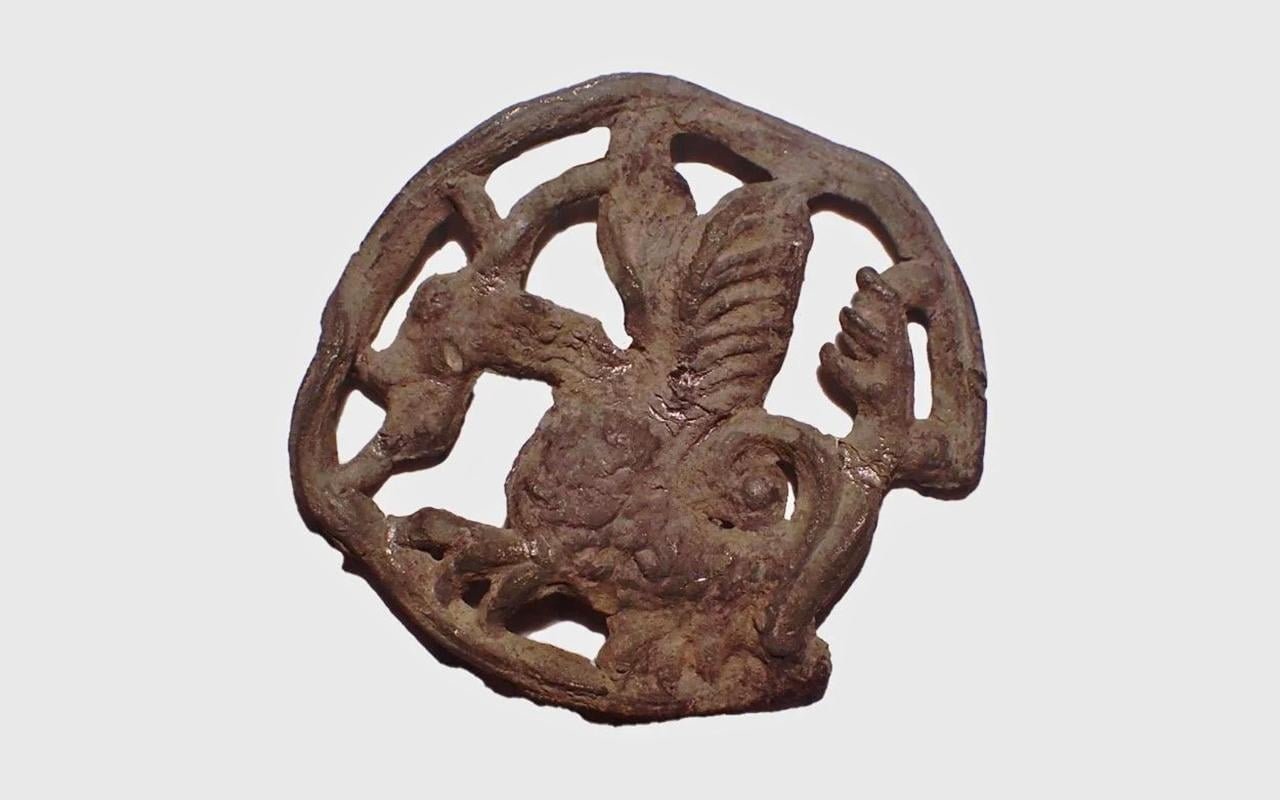A rare medieval pilgrim’s badge, featuring a depiction of a basilisk dragon, has been unearthed in the village of Wólka Nieliska, located in Zamość County, Poland.

The discovery was made by archaeologist Tomasz Murzyński and shared with local officials. The badge, also known as a “pilgrim’s sign,” is a small openwork pendant crafted from a mixture of lead and tin, measuring approximately 2.8 cm in diameter.
According to experts from the Lublin Provincial Conservator of Monuments, the circular badge is believed to have served as a talisman for medieval travelers, offering protection against various dangers encountered during journeys, including assault, theft, and diseases.
It is said to represent a basilisk dragon, a mythical creature known for its lethal gaze and breath, and was likely intended to ward off evil forces.
Pilgrim’s badges originated in the Middle Ages and were commonly worn by pilgrims between the 11th and 16th centuries. These badges varied in shape and form, with some depicting saints, knights, or human figures, while others, like the one found in Wólka Nieliska, featured animal figures such as dragons. They were not only symbols of faith but also served as markers of one’s journey and purpose.
While such finds are rare in Poland, they are more prevalent in Western Europe, particularly along pilgrimage routes like the Way of St. James. The Way of St. James, also known as the Camino de Santiago, is a network of routes leading to the shrine of the apostle James in Santiago de Compostela, Spain. The oldest pilgrim badges date back to the 11th century and are associated with this pilgrimage route.
The discovery in Wólka Nieliska adds to the small number of known pilgrim’s badges in Poland, with only a handful of similar artifacts found in other regions such as Stargard, Poznań, Żarnów, and Strzelin. Museums in Western Europe, including the Museum of London History, the Museum of Art History in Paris, and the Museum in Cologne, hold significant collections of these pilgrim signs.























